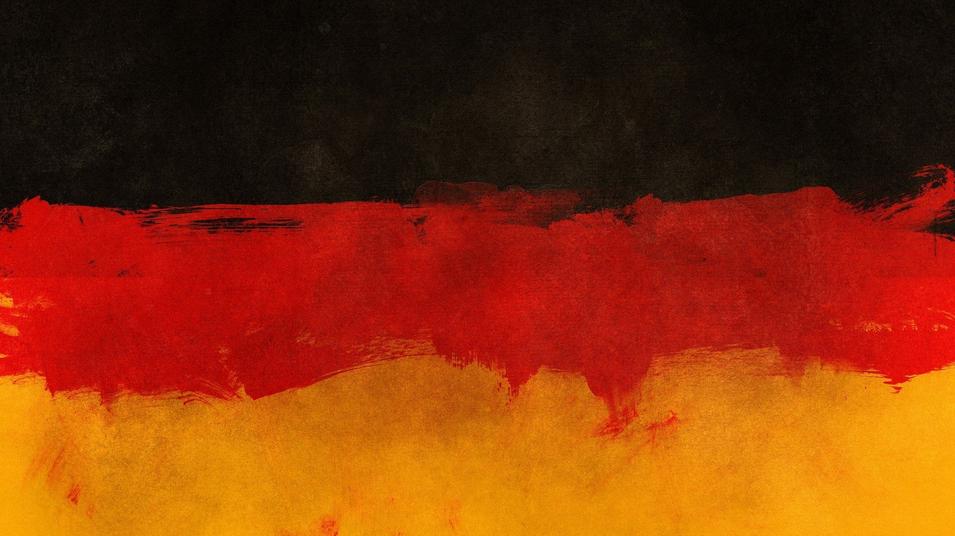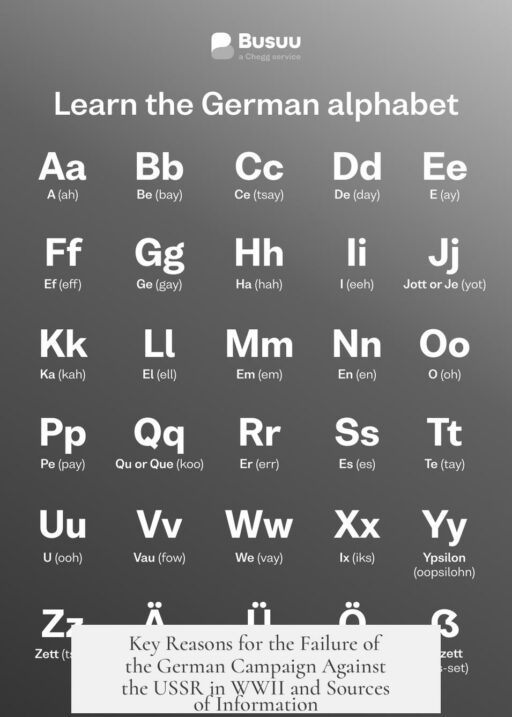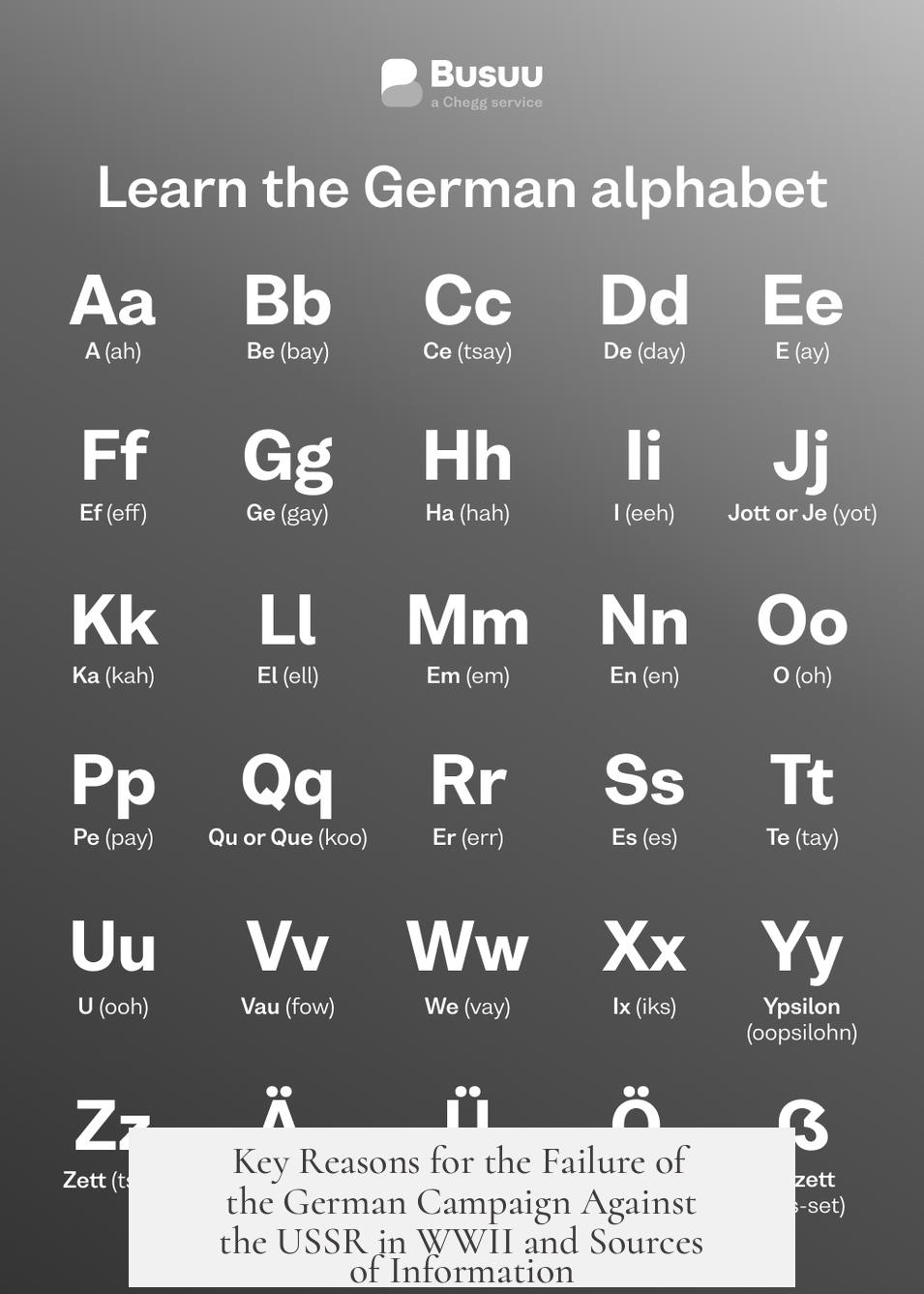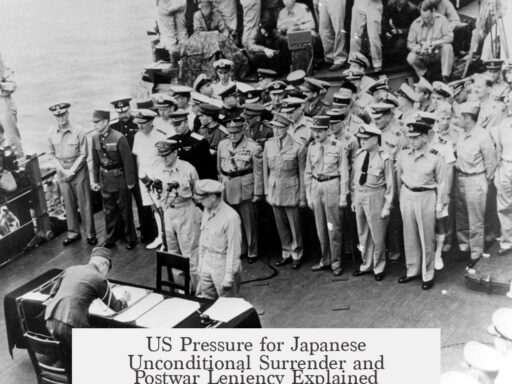The German campaigns against the USSR in WWII failed primarily due to a combination of strategic miscalculations by Germany, the vast resources and manpower of the Soviet Union, evolving Soviet command, harsh environmental conditions, and logistical difficulties. These factors collectively doomed Operation Barbarossa and subsequent offensives.

The initial Soviet unpreparedness played a significant role. Despite ample intelligence about German troop build-ups near the border, Stalin dismissed warnings, delaying Soviet readiness. This denial led to rapid German advances overrunning front-line Soviet divisions before they could mount effective defense. The purges of the Soviet military leadership in the late 1930s decimated its officer corps, impairing its ability to coordinate large-scale responses.
Stalin’s early war command style further weakened Soviet responses. He insisted on rigid obedience to orders, often directing his armies to hold positions or launch massive frontal counterattacks without regard to tactical realities. Several Soviet armies were encircled and defeated due to such inflexible tactics. Stalin’s fear of politically powerful generals limited delegation and operational flexibility.

Nonetheless, the USSR’s material and manpower superiority proved decisive over time. The country’s vast industrial base, despite early losses, outproduced Germany in tanks, artillery, and aircraft. Western aid, especially trucks, supplemented Soviet logistics. German economic planning failed to support their war needs adequately, only ramping up production efficiently late in the war. The Soviet ability to continuously field new armies and recover from losses was unmatched.
Germany’s logistical challenges compounded their strategic problems. The distances involved in the Soviet Union were enormous. The Luftwaffe had to deploy close to front lines, often at improvised airfields lacking proper facilities. German planes struggled in harsh winter, requiring heating to avoid failures, whereas Soviet aircraft benefited from heated hangars. Rapid German advances overstretched supply lines, forcing operational slowdowns and allowing Soviets more time to prepare defenses.

The Soviet capacity to absorb huge losses without collapse was critical. Early defeats cost the USSR over a million troops captured or killed, but it used time and resources to rebuild forces and learn from mistakes. Stalin adjusted his command style, easing political control and empowering generals more adept at battlefield management, improving strategic effectiveness.
Conversely, Hitler’s increasingly poor military decisions sealed Germany’s fate. Early in Barbarossa, he allowed generals operational freedom, but as the campaign faltered, he centralized control detrimentally. The refusal to allow the German 6th Army at Stalingrad to retreat ended with massive defeat and lost veterans. Delays at Kursk to wait for new tanks gifted the Soviets preparation time. Hitler’s strategic choices increasingly ignored operational realities and logistics.

Additional factors influenced the campaign’s failure. Western lend-lease aid improved Soviet mobility and firepower. The brutal winter of 1941-42 was far harsher than the Germans anticipated. German reprisals against civilians fueled partisan resistance, hampering operations. Soviet soldiers, motivated by defense of their homeland and historical pride from repelling Napoleon, fought tenaciously, despite enormous casualties inflicted largely by German forces.
Strategic timing and overreach by Germany worsened the situation. The invasion launched late in June 1941, missing optimal spring conditions for a rapid campaign. By the arrival at Moscow in December, severe cold and exhausted troops contributed to failure. Germany was unprepared for a prolonged conflict against a vast and determined adversary.
| Key Reasons for German Failure | Details |
|---|---|
| Initial Soviet Intelligence Failures | Stalin ignored warnings; Soviet forces unprepared |
| Stalin’s Early Command Style | Rigid orders, interference, led to tactical defeats |
| Soviet Material and Manpower Superiority | Large industrial base, Western aid outproduced Germans |
| German Logistical Challenges | Distance, poor airfield conditions, winter difficulties |
| Soviet Absorption of Losses and Learning | Time and resources to rebuild and evolve tactics |
| Hitler’s Military Decisions | Micromanagement, refusal to retreat, poor timing |
| Other Factors | Harsh winter, partisans, strategic timing errors |
Regarding sources, historians rely heavily on both Russian and German archives. The narrative often included myths, such as the idea that the Red Army only relied on overwhelming human waves without strategy. In reality, Soviet commanders adapted and developed competent tactics over the war. The extensive Soviet purges and the Winter War against Finland initially weakened the Red Army but did not destroy its capacity for learning and improvement.
For detailed scholarship, David Glantz’s “When Titans Clashed: How the Red Army Stopped Hitler” remains a seminal and reliable resource. It provides well-researched analysis from Soviet and German perspectives, challenging simplistic views of the Eastern Front.
Both Russian and German primary documents, including after-action reports and official communications, support nuanced understanding today. Western leaders underestimated the USSR before the war, partly due to the Red Army’s initial poor performance in the Winter War. Post-war Soviet historiography often emphasized sacrifice over strategy, but modern scholarship highlights the evolution of Soviet operational art and political adjustments that contributed to their ultimate victory.
- German failure was due to strategic mistakes, logistics, and underestimating Soviet capacity.
- Stalin’s command style evolved, allowing more competent battlefield management.
- Material superiority and industrial output favored the USSR over time.
- German overreach and poor winter preparedness limited operational success.
- Reliable sources include Soviet and German archives and David Glantz’s scholarly work.
What Were the Key Reasons the German Campaign(s) Against the USSR Failed in WWII? Unpacking History’s Giant Clash
The German campaigns against the USSR failed in WWII because a cocktail of strategic blunders, overwhelming Soviet resources, brutal winters, and evolving Russian command doomed Nazi ambitions. Simply put, the Germans underestimated the Red Army and overextended themselves into a vast, harsh land that refused to surrender. Let’s unwrap this epic saga step-by-step, dipping into mad political meddling, monstrous logistics nightmares, and why the Soviet war machine wasn’t just a horde of cannon fodder (spoiler alert: they had brains as well as brawn).
Ever wonder why Hitler’s lightning strike didn’t deliver the knockout punch to Russia like it did in Western Europe? What went wrong to flip a confident blitzkrieg into a grinding war of attrition? And with all these tales, do we have reliable Russian and German sources that clarify what truly happened? Buckle up.
1. The Achilles Heel: Soviet Intelligence Failures and Initial Unpreparedness
Imagine standing at the edge of a cliff, knowing the storm’s coming but refusing to get off your folding chair. That was Stalin’s posture in the months before Operation Barbarossa (the German invasion) began on June 22, 1941.
Despite clear intelligence signals—troop buildups along the Soviet-German border in Poland—the Soviet leadership was ghosted by disbelief. Stalin just couldn’t wrap his mind around Hitler’s betrayal. The result? Soviet forces were caught flat-footed, dense Soviet troop concentrations were quickly overrun, and large chunks of men and matériel vanished within weeks. The purges of the late 1930s, where Stalin ruthlessly eliminated many experienced officers, left the military brain-dead in command tactics. This was a recipe for disaster, with whole divisions collapsing, heavy losses, and more than a million POWs by December 1941.
2. Stalin’s Command Style: Why Micromanagement Killed More Than Just Morale
Ever hear the phrase “too many cooks spoil the broth”? Stalin was that chef who ignored the recipe and kept stirring furiously despite clear signs the dish was burning. Early in the war, Stalin insisted on absolute control, issuing rigid orders to hold positions or launch massive, badly coordinated assaults.
While supposedly a master strategist, Stalin showed less flair for military command and more fear of popular generals overshadowing him politically. The result? German arms outmaneuvered and isolated huge pockets of Soviet troops. Entire armies were enveloped and smashed. Stalin’s iron grip suffocated tactical flexibility, racking up disastrous losses.
3. Soviet Superpower: Material and Manpower to Burn
The phrase “quantity has a quality all of its own” sounds like a defeatist cheer, but here it reads differently. The Soviet Union’s sheer industrial capacity and mass manpower became a monstrous advantage.
Despite Nazi propaganda singing praises to German efficiency, the reality was the opposite. Germany faltered as an economic coordinator, unsure how to keep pace producing the staggering amounts of tanks, planes, and trucks a long Eastern front war required. Meanwhile, the USSR, though battered, kept churning out T-34 tanks and mobilizing millions—aided by Western lend-lease trucks and supplies.
4. Logistics: The Luftwaffe’s Airfields Became Flypaper for Failure
Russia is a landslide of epic size, and the farther the Germans penetrated, the more tangled their supply lines became—think of a kid dragging an impossibly long garden hose over barbed wire fences.
The Luftwaffe had to operate from hastily established, poorly equipped airfields close to the front lines. Their planes needed warmth in winter or the engines seized up, while Soviet aircraft lounged in heated hangars, ready for takeoff on command. Pushed to exhaustion, German troops faced delays, stalled advances, and supply shortages, undermining the blitzkrieg pounce into a crawl.
5. Soviet Tenacity: Absorbing Catastrophic Losses and Learning Fast
Many myths reduce the Red Army to mere cannon fodder—throw a million men at a problem and hope it dies. But the real story is more complicated and quite frankly more impressive.
The USSR absorbed jaw-dropping casualties, true, but they also had time and space to regroup, reform, and retrain. Throughout 1941-42, new armies were raised with increasingly competent officers, many battle-hardened by terrifying early defeats. The Soviet system learned lessons rapidly, adapting tactics and command procedures. This gave them a valuable cushion—a “grit reserve” the Germans simply couldn’t match.
6. Command Evolution: Stalin’s Lesson on Delegation
Stalin’s early war missteps highlighted the limits of political micromanagement in a fast-moving theater.
By late 1942, he loosened the reins, giving generals more real-time operational control and reducing the political commissars’ reach. This shift boosted battlefield effectiveness. It was a tactical evolution born of necessity, a move from dictatorship to disciplined delegation, which steadily turned the tide.
7. Hitler’s Blunders: From Puppet Master to Failed Dictator on the Frontline
Early in Barbarossa, Hitler let his generals plan much of the operation. But as the invasion bogged down, he seized control like a jealous lover, ignoring battlefield realities.
When the 6th Army found itself surrounded at Stalingrad, rather than ordering a strategic withdrawal, Hitler insisted on holding ground “at all costs.” This sealed the fate of tens of thousands of veterans and equipment the Nazis could ill afford to lose.
At Kursk in 1943, instead of striking the Soviet defenses before they were ready, Hitler delayed so new Tiger tanks could arrive, giving the Red Army precious weeks to dig in. The result? A bloody defensive battle that crushed German offensive capabilities.
8. Brace Yourself: The Extra Factors That Tilted the Scales
- Western Lend-Lease aid arms the Soviets with trucks and supplies—not just numbers but critical gear.
- The first winter of invasion was brutally cold, and German troops weren’t prepared for frostbite or mechanical freezing.
- The Soviet T-34 tank was a game-changer—the Germans had no early answer to it.
- German brutality against civilians and POWs bred partisan resistance, slowing the occupation.
- Stalin’s dark willingness to pour human lives into the war inflicted with little regard sped Soviet resistance.
- Russian troops fought for their homeland fiercely, fueled by history’s echoes of repelling Napoleon.
9. The Clock and The Map: Timing and Overreach Sink the Wehrmacht
The invasion started too late in the season—June 22 instead of April or early May. By the time German troops neared Moscow, winter was howling. Not exactly the ideal setting for a summer blitzkrieg.
Germany’s strategic gamble to attack the USSR was poorly thought out. They were not prepared for a prolonged war in the vastness and industrial depth of Russia. The overextension strained their supply lines and morale, leading to eventual collapse.
Do Russian and German Sources Paint a Clear Picture?
History loves a good myth, and here it is: the Red Army only won due to reckless sacrifices of millions of Soviet soldiers. But wait—there’s more nuance.
Questions abound. Was Stalin’s sacrifice of human life really a reluctant necessity? Was the Red Army’s command purely incompetent? Or was there genuine tactical evolution and competent leadership emerging as the war progressed?
Though specific Russian or German archival sources aren’t explicitly named in every angle, historians widely recognize When Titans Clashed: How the Red Army Stopped Hitler by David Glantz as a landmark work. Glantz meticulously uses Soviet archives to challenge misconceptions, showing that the Soviet command grew less clumsy over time and that intelligence failures were only part of a massive story.
On the German side, post-war narratives often painted Soviet soldiers as barbaric masses to justify Nazi defeats. These accounts require careful cross-examination with archival evidence and modern studies.
Is It Just About Numbers? A Summary
Despite millions of Soviet casualties—grim and undeniable—the Red Army had competent officers, evolving tactics, and a deeply motivated war effort behind them. The Germans made numerous strategic errors compounded by logistical nightmares, harsh climate, and Soviet industrial heft. While early Soviet command suffered under Stalin’s paranoia and purges, the Red Army adapted quickly enough to turn staggering losses into ultimate victory.
Asking whether we have good Russian and German sources? Absolutely. The archives exist, and historians like Glantz open those doors wide. But as with any grand history, narratives can be complex, nuanced, and sometimes politically charged. Recognizing myths opens the door to deeper understanding.
Final Thoughts: Lessons from This Epic Battle
History isn’t just a quiz on dates and battles. The German campaigns against the USSR teach many lessons:
- Good intelligence is worthless without decisive action.
- Command flexibility beats rigid control in war.
- Material production and logistics shape victory as much as soldiers’ courage.
- Respect the vastness of geography and climate.
- Brutality breeds resistance. Hearts and minds matter.
- Sacrifice can’t substitute for strategy—but resilience is powerful.
Next time you wonder why Nazi Germany crumbled in the East but dominated early in the West, remember the intricate dance between ruthless ambition, harsh terrain, savvy Soviet adaptation, and unimaginably high human costs. The German campaign against the USSR failed not from one flaw but a cascade of them. And thanks to detailed research from both Russian and German perspectives, history’s fog lifts to reveal a far more vivid and sobering tale than any legend.




